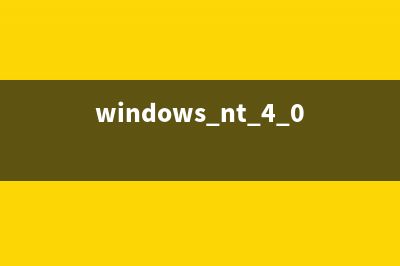位置: 编程技术 - 正文
squid 强制缓存动态页面(强缓存标志)
编辑:rootadmin推荐整理分享squid 强制缓存动态页面(强缓存标志),希望有所帮助,仅作参考,欢迎阅读内容。
文章相关热门搜索词:强制清理缓存,强制清理缓存,强缓存标志,如何设置强缓存,强制清理缓存,强制清理缓存,强制清缓存快捷键,强制缓存状态码,内容如对您有帮助,希望把文章链接给更多的朋友!
其实我本不想写这个标题,我的本意是缓存yupoo api的查询数据,这个过程中找到了参考方法(Caching Google Earth with Squid)。呵呵,所以偶也来一回标题党。
这篇参考流传非常广,Digg上也被提过,我也不知道原出处是哪里了。
可是。。。。你按照它的指示设置,它并不能正确工作!!
话说回来,先说说我的需求。
最近yupoo的访问速度很慢,我有一堆api请求经常无法完成,猜测要么对方限制了同一ip的连接数,要么是yupoo又遇到了新一轮的流量瓶颈。跟Yupoo的zola联系后,确认是他们的负荷太高引起的,并没有限制连接数。所以我要想办法在我这边做一些缓存了。
因为我这边本身就是用squid代理来解决Ajax中调用API的跨域问题的,所以自然是目标瞄准了squid的配置文件。
yupoo api的请求地址是 www.yupoo.com/api/rest/?method=xx&xxxxxxx...
大家都知道squid会自动缓存静态文件,可对于这种动态网页怎么让它也缓存起来呢,所以在google上找啊找,找到上面提得那片缓存Google Earth的博客文章。他的方法是:
acl QUERY urlpath_regex cgi-bin ? intranetacl forcecache url_regex -i kh.google keyhole.comno_cache allow forcecacheno_cache deny QUERY
# ----refresh_pattern -i kh.google % override-expire override-lastmod reload-into-ims ignore-reload
refresh_pattern -i keyhole.com % override-expire override-lastmod reload-into-ims ignore-reload
原理就是用 no_cache allow 和 refresh_pattern 来设定一些缓存规则,将google earth的请求强行缓存起来。
此文一出,自然早有人去验证,可是没人成功,原作者也音讯全无 ... squid的邮件列表里也提到。 ( 看标题进来的朋友,不要急,继续往下读,不会让你空手而回的 )
我也没在意,估计人家功力问题 。先试着用改写一下解决yupoo api的缓存问题。
acl QUERY urlpath_regex cgi-bin ?acl forcecache url_regex -i yupoo.comno_cache allow forcecacheno_cache deny QUERY
refresh_pattern -i yupoo.com % override-expire override-lastmod reload-into-ims ignore-reload
嘿,果然nnd毫无用处,访问记录里还是 一坨坨 TCP_MISS

于是翻来覆去看文档,找资料,发现是squid的bug惹得祸,不过早已经修正(严格来说是功能扩展补丁)。
我的squid是2.6.,翻了一下源代码,确实已经打好补丁了。
解决这个问题需要refresh_pattern的几个扩展参数(ignore-no-cache ignore-private),这几个参数在squid的文档和配置例子中均没有提到,看来squid还不够与时俱进。
下面讲一下问题所在。
先看看yupoo api返回的HTTP头部信息(cache 相关部分)
Cache-Control: no-cache, must-revalidatePragma: no-cache
这两行是控制浏览器的缓存行为的,指示浏览器不得缓存。squid也是遵循RFC的,正常情况下自然不会去缓存这些页面。override-expire override-lastmod reload-into-ims ignore-reload 统统不能对付它。
而那个补丁正是对付这两个Cache-Control:no-cache 和 Pragma: no-cache的。
因此把 refresh_pattern那句要改写成
refresh_pattern -i yupoo.com % override-expire override-lastmod reload-into-ims ignore-reload ignore-no-cache ignore-private
这样就大功告成了, squid -k reconfigure 看看 access.log ,这回里面终于出现TCP_HIT/ TCP_MEM_HIT/ 了,说明缓存规则确实起作用了,那个激动啊 ~~~~
====================补充:后来我看了一下google earth 服务器 hk1.google.com的HTTP头部,只有
Expires: Wed, Jul :: GMTLast-Modified: Fri, Dec :: GMT
,这么看来照理不需ignore-no-cache ignore-private也能工作,可能是作者这里写错了kh.google 应该是 kh..google才对。
最后总结一下,缓存Google Earth/Map的正确的配置应该是
acl QUERY urlpath_regex cgi-bin ? intranetacl forcecache url_regex -i kh..google mt..google mapgoogle.mapabc keyhole.comno_cache allow forcecacheno_cache deny QUERY
# ----refresh_pattern -i kh..google % override-expire override-lastmod reload-into-ims ignore-reload ignore-no-cache ignore-privaterefresh_pattern -i mt..google % override-expire override-lastmod reload-into-ims ignore-reload ignore-no-cache ignore-privaterefresh_pattern -i mapgoogle.mapabc % override-expire override-lastmod reload-into-ims ignore-reload ignore-no-cache ignore-private
refresh_pattern -i keyhole.com % override-expire override-lastmod reload-into-ims ignore-reload ignore-no-cache ignore-private
注:khX.google.com 是google earth的图片服务器mtX.google.com 是google map 的图片服务器mapgoogle.mapabc.com 是google ditu的图片服务器
squid配置解析 4.1常用的配置选项因为缺省的配置文件有问题,所以我们必须首先修改该配置文件的有关内容,以便让squid跑起来。下面我们来看一看squid.conf文件的结构
通过U盘安装Ubuntu Linux的方法 U盘装Linux 本文将介绍如何在u盘上安装UbuntuLinux系统.虽然本文采用的是Ubuntu,但实际上依此方法安装其他LinuxliveCD发行版也是可行的.从u盘上运行Linux,丰富了liveCD的
Linux下最常用的Shell命令的介绍(图文) 有些人仍然会有这种愚蠢的想法,他们认为使用Linux就必须使用Linuxshell命令。胡说!你可以不懂得任何Linux命令,比如说ps,grep,ls等,但是你仍然可以
标签: 强缓存标志
本文链接地址:https://www.jiuchutong.com/biancheng/364127.html 转载请保留说明!上一篇:Linux fdisk 命令使用详解(linux中fdisk -l)








